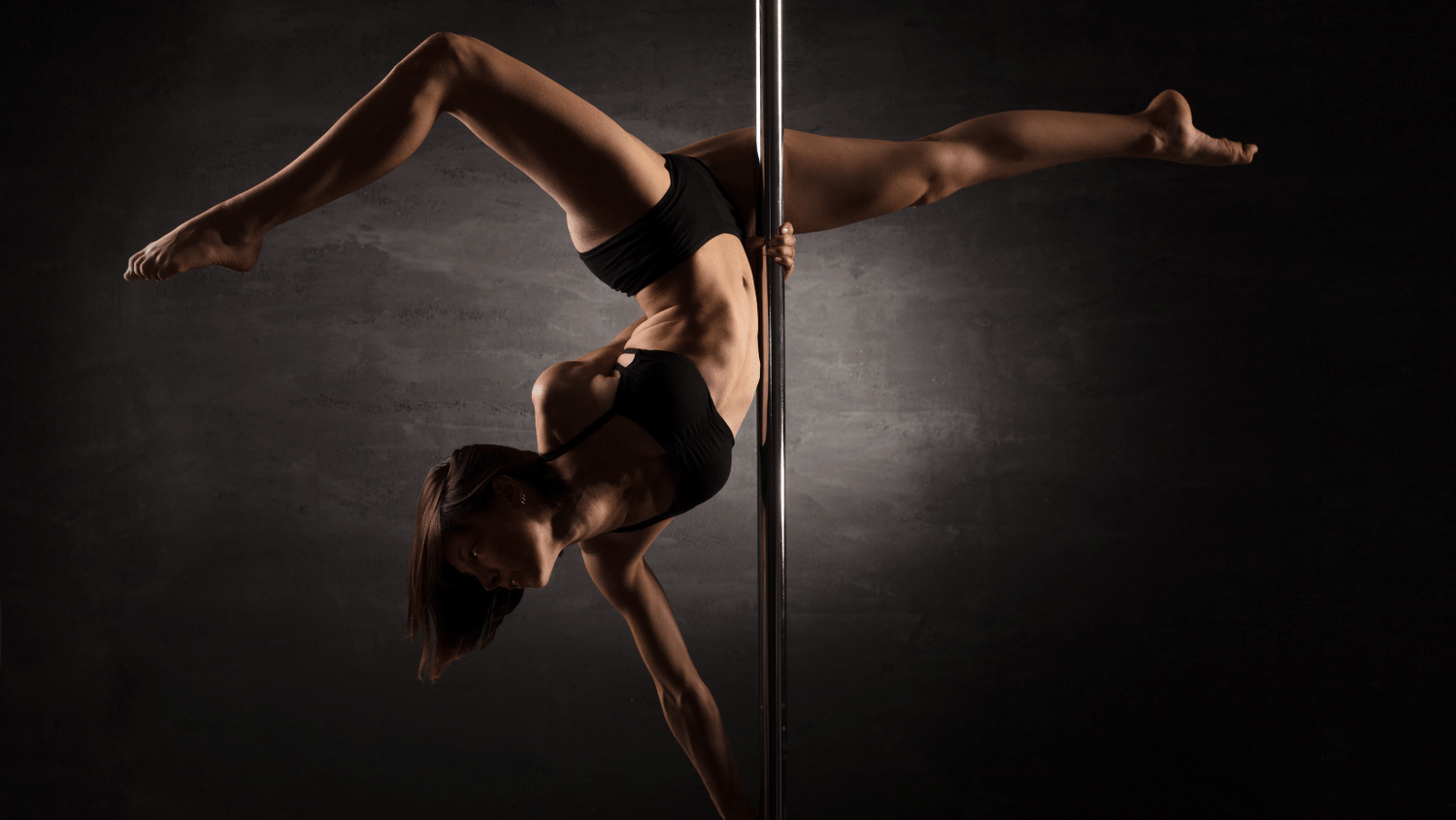
Focus on pole dancing
Pole dancing: a complete discipline
Imagine combining the elegance of dance with the intensity of a workout. Pole dancing does just that! It works every muscle in your body, builds your stamina, and improves your flexibility. The best part? You can even practice it at some gyms, which means you have access to a variety of options for incorporating pole dancing into your workout routine.
Here are the main muscle groups and physical aspects worked by practicing pole dancing:
- Upper Body Muscles: Pole dancing places intense demands on the muscles of the arms, shoulders, back, and core. Spinning around the pole, climbing, and performing tricks require significant upper body strength.
- Core Muscles: To maintain positions and figures on the bar, the abdominal and lower back muscles are used, helping to strengthen the abdominal strap and improve core stability.
- Leg and glute muscles: The up and down movements and floor figures work the muscles of the legs, thighs and glutes. Pole dancing helps tone these muscles and improve their endurance.
- Flexibility: Although flexibility is not necessary to begin, pole dancing promotes the development of body flexibility as practice progresses. Stretching and contortion movements help improve flexibility.
- Balance and Coordination: Pole dancing requires a high degree of balance and coordination to perform complex tricks while balancing on the pole. This stimulates proprioception (awareness of the body's position in space) and improves overall coordination.
- Cardio training: The rapid sequences of movements and continuous effort in a pole dancing session can also provide cardiovascular benefits, helping to increase endurance and burn calories.
Opt for pole dancing to gain self-confidence
Pole dancing isn't just about physical fitness. It's also a powerful way to boost your self-confidence. As you master new moves and feel more comfortable in your body, you'll gain self-esteem.
Debunking Prejudices
Unfortunately, this practice is sometimes still the victim of prejudice...
Prejudice 1: Pole dancing is reserved for women
This misconception is completely false. Pole dancing is practiced by people of all genders. There are no restrictions on who can do it. More and more men are getting involved in this discipline, proving that pole dancing is for everyone.
Prejudice 2: Pole dancing is vulgar
Pole dancing is, above all, a form of art and fitness. The choreographies are elegant and physically demanding. Of course, there are more sensual styles, but it depends on each individual's choice. Sensuality doesn't necessarily mean vulgarity.
Prejudice 3: Pole dancing is not a real and serious sport
Pole dancing requires incredible strength, coordination, and body control. Pole dancing competitions are increasingly popular and require high-level athletic skills. It's a serious sport that deserves respect.
Prejudice #4: You have to be flexible to do this sport
It's a common misconception that pole dancing requires exceptional flexibility, but this misconception is actually unfounded. While flexibility can be an asset in practice, it's not a prerequisite for getting started. In fact, pole dancing can actually help you gradually develop your flexibility as you train. Classes are designed to accommodate all flexibility levels, meaning you can start even if you're not particularly flexible. With time and regular practice, you'll see significant improvements in your flexibility, while also enjoying the other benefits of this incredible sport.

Pole Dancing for All Ages
Pole dancing isn't just for adults. More and more studios are offering classes tailored to children and teens. These classes are specifically designed to meet the needs of young practitioners, emphasizing fun, creativity, and safety. This allows children to develop their strength, coordination, and confidence in a fun way. Classes for children and teens focus on basic movements, dance, and exercises appropriate for their developmental level. This is a great opportunity for young people to discover a new physical activity while having fun, and it can help keep them active and healthy. If you're a parent, don't hesitate to find out about kid-friendly pole dancing classes in your area to give your little ones an opportunity to try this artistic and athletic discipline.
Getting Started in Pole Dancing
If you're ready to dive into the world of pole dancing, here are some steps to get started:
- Look for a pole dancing studio or gym near you. Clubs like ON AIR FITNESS, for example, offer them. Many locations offer classes for all levels, giving you the flexibility to choose the option that best suits you.
- Choose comfortable clothing that allows you to move freely. Recommended outfits include short shorts, which allow your legs to better grip the bar, and a sports tank top. Make sure your clothing is neither too loose nor too tight, as a well-fitting outfit provides better control of your skin against the bar. Some people also prefer to use knee pads to prevent chafing and bruising when learning new tricks.
- Be careful: Safety first! Make sure you're using a bar that's in good condition, and start with simple movements.
- Practice regularly: The key to success in pole dancing is consistent practice. The more you practice, the faster you'll progress.
- Join the community: Connect with other pole dancing enthusiasts online and offline. They'll be a valuable source of inspiration and support.
Pole dancing is a new sport that will help you achieve your fitness goals while discovering a new passion. So, don't hesitate to give it a try and see for yourself how pole dancing can transform your body and your confidence. It's your time to shine and break down the stigma!
